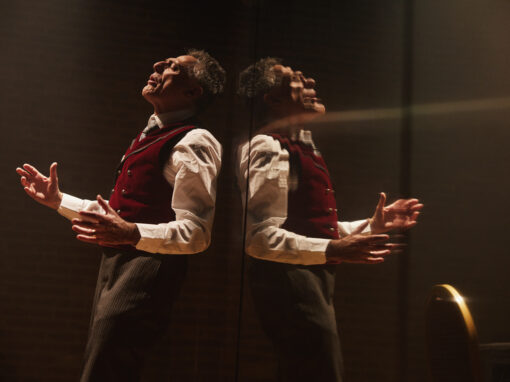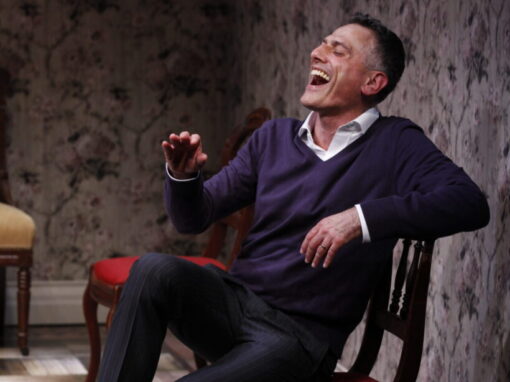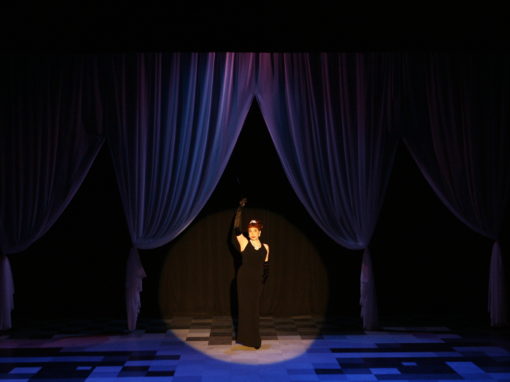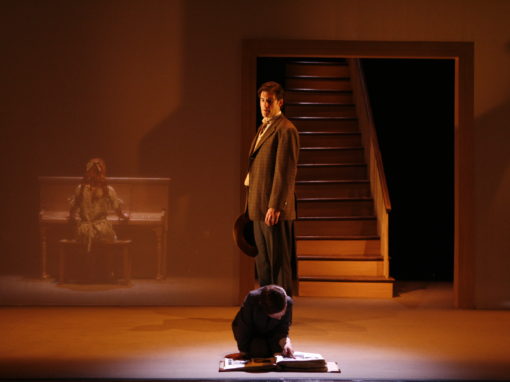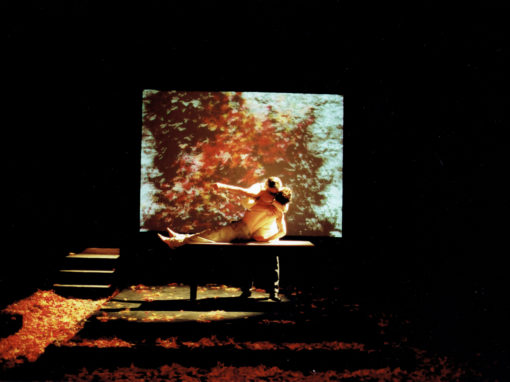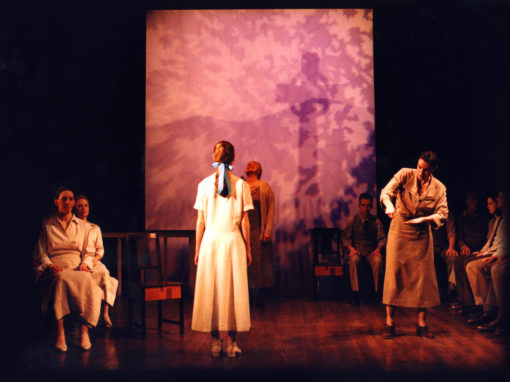Striking Up The Band // by Joey Chancey
Music Director Joey Chancey reflects on the thrill of conducting a Golden Age-sized orchestra.
I’d like to share with you my opportunity to have a few of those experiences.
I was introduced to Transport Group in the summer of 2014. I met Artistic Director Jack Cummings III after playing an evening performance of the Broadway show, Beautiful. Our post-show meeting at The Westway Diner went well and because of that, many great collaborations were about to happen.
He asked me to music direct and conduct Transport Group’s benefit concert of Meredith Willson’s The Music Man that was coming up in a few months. I learned quickly that the formula for putting together these concerts is very fast and happily furious.
First, a Golden Age musical is selected and then we examine the score, extracting the songs to stand alone and insert a new “script.” Instead of using the original script of the musical, a new one is written by both Jack and TG Artistic Producer, Hannah Oren. The new script consists of stories involving the creation and evolution of the show, biographies of the authors, anecdotes, backstage gossip, and educational information about the musical score—think Inside the Actors Studio goes backstage on Broadway.
And instead of one person playing a role for the entire show, a different performer is assigned to each song (e.g. Sherry D. Boone, Julia Murney, Alexandra Silber, and Bryonha Marie Parham each singing a different song of Aldonza in our 2017 benefit concert of Man of La Mancha).
On the musical end of things, I contact every musician that I know in the greater New York City area hoping that 1: They will be available for both the date of the concert and the scheduled orchestra rehearsal and 2. The “payment” of playing a glorious Golden Age score with a full Broadway orchestra will suffice. (Note: All performers, musicians, and crew donate their time and talent to benefit Transport Group’s new musical program—the idea being that by celebrating a work from the past, we can help create works for the future.)
Compared to today’s standards, Golden Age musicals typically have exceptionally large orchestras—upwards of 24 and up to 36 musicians. So, I next ask myself, “Do I even know that many musicians?” Thankfully, I come to the conclusion that the answer is “yes.” Even more thankfully, there is also a “yes” to the musicians graciously accepting as payment the thrill of playing a Golden Age score alongside their colleagues with the full, original orchestrations—an extremely rare opportunity on Broadway these days.
I spend a week at the piano rehearsing all of the various soloists (at times the number of performers is over 50) for the concert. I then assemble an ensemble of singers to fill out the chorus of the show. One of my side hustles turned passion project is being the Music Director of The St. Paul Inspirit Ensemble, comprised of over 45 singers that sing weekly at St. Paul’s Church on 59th Street. The singers from that group have repeatedly made up the chorus for these concerts—four brave and talented ladies specifically took on the daunting task of learning the offstage quartet for Promises, Promises and they killed it!
The next step is rehearsing the orchestra. Take into account some of the scores we have done are incredibly challenging and stylistically very specific (the big band brass and swinging woodwinds in Sweet Charity, the rhythmic ‘70s groove of Promises, Promises, and the syncopated meters led by the Spanish guitars in Man of La Mancha). Incredibly (but not surprising), these mega-talented musicians sit down to play through the entire score cover to cover in under four hours—sight reading. With the exception of explaining a few cuts in the music or specific notes, there is very little talking on my part and a whole lot of playing on theirs. (Little talking and lots of playing is heaven to a conductor and a gift beyond measure when in the company of such talented players.)
The next meeting is the day of the concert. Starting at 1:00 p.m., each song is scheduled in fifteen-minute increments for the singer to rehearse with the orchestra, get their blocking, and do a quick soundcheck. This is where the “happily furious” part comes in.
A long afternoon of rehearsing is followed by a short dinner break and the entire group returns to the stage to sing the finale and stage the bows.
We always hear the audience in the lobby at this point. Cue: nerves! After being incredibly calm all day, my mind starts to race. Did I mention the new cut in a song we just put in? Does everyone remember we are slowing down the end of the other song? Is my script in order? Did that broken guitar string get r? Does my vocal monitor work? Did I remember my bow tie?
This is where the theater gods smile down on me. The answer (once again) is “yes” to all of the above.
After I put my tuxedo on, I have about five minutes to myself to focus as sharply as I am able. Keep in mind that all of the time I’ve spent so far has been spread over working with everyone separately. My preparation and intimate knowledge of the score will now be my subconscious guide to bring it all together, while my conscious attention will be focused on the orchestra, the performers, the new script, and the hosts of the concert.
The layers get added on very quickly for me and using every bit of prior musical experience now kicks into gear. Not only are we playing this score, but we are honoring it. The task to perform it to its fullest glory and shape the songs with the greatest musicality, in a duet with the singers, is my responsibility.
When it’s time to give the downbeat for the overture, the real magic happens. The instincts of every artist on the stage (and those waiting to perform in the wings) come alive and an overall sense of theatrical simpatico happens.
Songs flow seamlessly from start to finish and the singers are in touch with the orchestra and vice versa. There is an overwhelming sense of joy that fills the entire room knowing we are being transported back in time to a musical era of bygone days. The pride each person takes in upholding their part in the score is treated like a duty of Broadway royalty.
I remember becoming aware of what a conductor was at an early age by an inspiring woman who conducted the choir at my church. I knew right then that’s what I would do with my life. Since then, I have searched to be able to articulate what it feels like to conduct music—an orchestra, a choir, a musical.
There are no words passionate enough to describe the experience. You are holding the music in your hands and the sound seems like it is coming from the end of your baton. As you “draw” and “paint” the emotion of the score, it is responded to by a musical sound that only you hear to your physical gestures.
That is the magic of conducting.
You are the liaison between the music and lyrics, the stage and orchestra, the singers and musicians. You are even physically (typically) situated between them somehow.
The once-a-year concerts with Transport Group (named The Anne L. Bernstein Concert Series) have all taken a special place in my heart. Collaborating with Jack and Hannah, conducting incredible musicians playing treasured scores, sharing the stage with Broadway legends, and all the while employing every fiber in my being for what I love.
These events challenge me more than I can describe but I also know these are the events that truly make me feel alive.
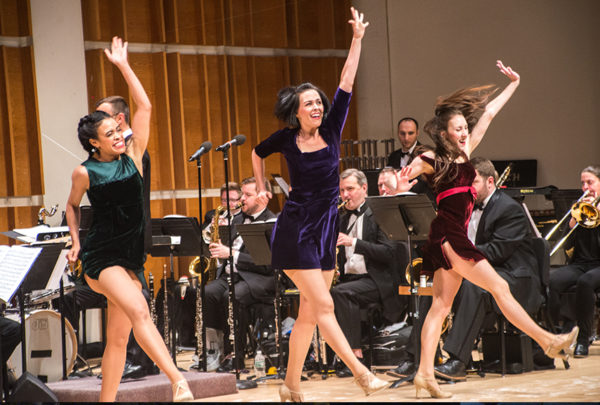
About the author:

Explore Our Past Shows
